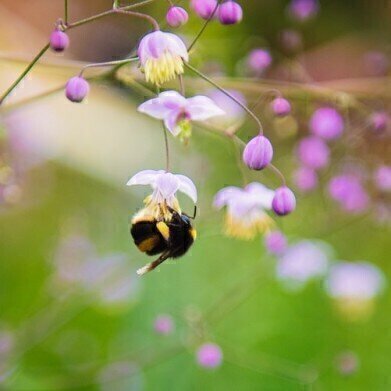LC-MS
Chromatography Analyses the Health Benefits of Bee Pollen
Dec 29 2019
Bee pollen is gathered by bees to help make food for the rest of the bee hive. It is a complex mix of different compounds including sugars, proteins and fatty acids. As well as being used by the bees as a source of food, it is also used by humans as a food source. Its health benefits could make it a valuable natural product.
A recent paper published online in the journal Biomolecules has looked at one potentially healthy aspect of bee pollen. The paper - Phenolic Composition Influences the Health-Promoting Potential of Bee-Pollen - used chromatography coupled to mass spectrometry to investigate the phenolic content of bee pollen from a variety of sources in Serbia. Advances in the use of MS to analyse samples is discussed in the article, Recent Advances to Conquer Analytical Challenges with High-Resolution, Accurate Mass Spectrometry.
But what is bee pollen exactly?
Bee pollen is the main source of nutrients and phytochemicals that bees collect to feed their larvae. It is made from floral pollens, nectar and secretions from the mouths of honeybees and is also known as bee bread. Bees eat both fresh pollen and bee bread - with bee bread being stored in the hive to use when pollen is in short supply through the winter months.
Bee bread is said to have antioxidant properties due to the phenolic compounds found in pollen. These may have a role in protecting cells from oxidative damage by mopping up free radicals. This can help to protect us from diseases including cancer and cardiovascular diseases. It was these properties that the researchers in Serbia were interested in when they analysed local bee pollen.
Analysing Serbian bee pollen with LC-MS
The team have previously analysed bee pollen for its mineral content and aflatoxin contamination levels - but decided this time to analyse the phenolic content using high-performance thin-layer chromatography (HPTLC) and ultra-high-performance liquid chromatography coupled with ion trap-Orbitrap mass spectrometry (UHPLC-LTQ Orbitrap MS). These techniques have proven useful in analysing phenolic compounds in different matrices and samples.
The team analysed 24 samples of bee pollen from various locations in Serbia. HPTLC fingerprinting confirmed the grouping of samples having specific phenolic composition based on location. UHPLC-LTQ Orbitrap MS identified eight new flavonol glycosides or flavonoids in bee pollen alongside high levels of flavonoids. The analysed bee pollen samples contained high quantities of phenolics that may have therapeutic value.
Digital Edition
Chromatography Today - Buyers' Guide 2022
October 2023
In This Edition Modern & Practical Applications - Accelerating ADC Development with Mass Spectrometry - Implementing High-Resolution Ion Mobility into Peptide Mapping Workflows Chromatogr...
View all digital editions
Events
Apr 23 2024 Kintex, South Korea
Apr 23 2024 Seoul, South Korea
Apr 28 2024 Montreal, Quebec, Canada
May 05 2024 Seville, Spain
May 15 2024 Birmingham, UK














